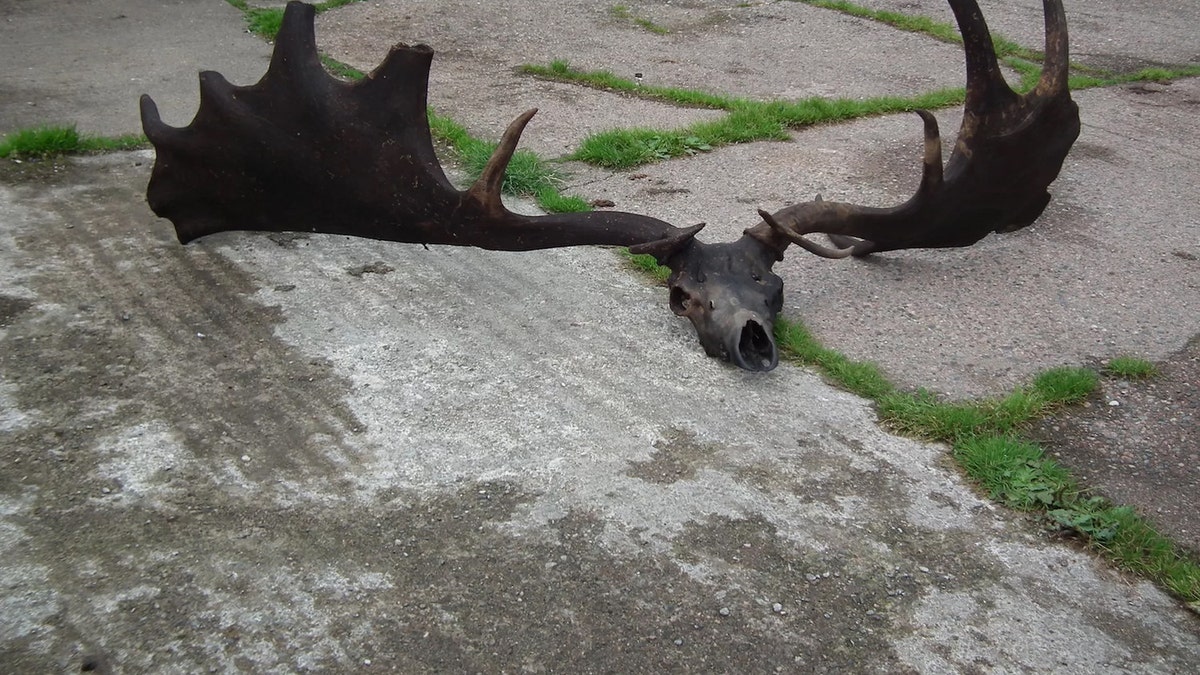
Fishermen caught quite the catch with this enormous skull and antlers from an extinct Irish elk. Credit: Pat Grimes/Ardboe Heritage
Fishermen in Northern Ireland pulled in the catch of a lifetime on Wednesday (Sept. 5), when they caught an enormous Irish elk skull that's estimated to be more than 10,500 years old. The impressive specimen is about 6 feet (1.8 meters) across and is almost fully intact.
Raymond McElroy and his assistant, Charlie Coyle, caught the massive antlers in their fishing net in the northwest region of Lough Neagh, a large freshwater lake. The men were fishing in water no more than 20 feet (6 meters) deep, about a half mile from shore, said Pat Grimes, a local historian who shared his photos of the impressive discovery.
"I was shocked to begin with when I got it over the side [of the boat] and saw the skull and antlers," McElroy told BelfastLive. [Gallery: The World's Biggest Beasts]
Irish elk (Megaloceros giganteus) have been extinct for more than 10,000 years, and were one of the largest deer species to ever roam the Earth, according to the University of California Museum of Paleontology. The name Irish elk is a bit of a misnomer on both parts, in that they're technically deer, and were found well beyond Ireland — they were present throughout Europe, northern Asia and northern Africa. Still, remains of these large beasts have been found in the bogs and lakes of Ireland more often than other parts of the world.
In recent years, the lakebed of Lough Neagh has proved to be a relatively bountiful spot for skeletal remains of the extinct giant deer. In 1987, a fisherman named Felix Conlon netted a set of antlers attached to a skull that he gave to a local school to display, Grimes told Live Science. Then in 2014, another fisherman, Martin Kelly, found a lower jawbone from an Irish elk estimated to be at least 14,000 years old by Kenneth James, the curator of the Ulster Museum in Belfast, Northern Ireland.
The deer lived in Ireland when the weather was suitable on the grass plains, but years later, forests began to grow, Mike Simms, a paleontologist at the Ulster Museum, told BelfastLive. Unfortunately for the large beasts, "giant antlers aren't great in the forest," Simms said. "Environmental change is what caused their extinction."
McElroy found the enormous skull and antlers in the same area of the lake where Kelly found the lower jawbone, and McElroy suspects the bones came from the same individual, BelfastLive reported.
For the time being, McElroy has the antlers stored in his garage for safekeeping until local authorities decide where the antlers' permanent home will be.
Original article on Live Science.
